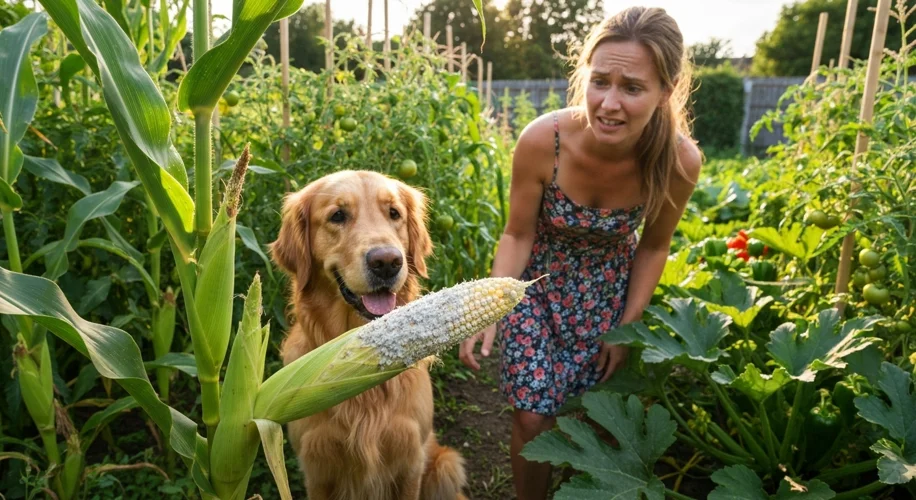It was a crisp morning on August 6th, 2025, and I stepped out into my garden, coffee in hand, ready for my usual dose of nature. My golden retriever, Buster, trotted alongside me, tail wagging. Suddenly, he stopped, head tilted, and then nudged something towards me with his nose. A gift! Except, this gift was… concerning.
It looked like a piece of sweetcorn, but it was covered in a strange, powdery, grayish-white substance. My first thought was, “Diseased sweetcorn?” My mind immediately went to the worst-case scenarios. Is it contagious? Will it spread to my healthy plants? What is this stuff?
Identifying the Culprit
After a closer look (and a quick retrieval from Buster before he decided to taste-test it), I realized the powdery substance wasn’t just on one kernel. It was a coating, and the cob itself seemed a bit distorted. A quick search online, armed with terms like “powdery white fungus on corn,” led me to a likely suspect: Powdery Mildew.
Powdery mildew is a common fungal disease that affects a wide range of plants, including corn. It thrives in warm, humid conditions, often exacerbated by poor air circulation. It typically appears as white or grayish powdery patches on leaves, stems, and sometimes, as I discovered, on the developing ears.
Why My Sweetcorn Got Sick
Several factors could have contributed to my sweetcorn falling victim to powdery mildew:
- Humidity and Temperature: The summer weather we’ve been having is perfect for fungal growth. High humidity, especially overnight, combined with warm days creates an ideal environment.
- Plant Spacing: While I try to give my plants room, sometimes in the enthusiasm of planting, rows can get a bit crowded. This reduces air circulation around the plants, making them more susceptible.
- Variety Susceptibility: Some corn varieties are naturally more prone to powdery mildew than others. I’ll be checking the seed packet for future reference.
What To Do When Plants Get Diseased
Finding a diseased plant can be disheartening, but it’s a common part of gardening. Here’s what I’m doing, and what you can do too:
- Remove Affected Parts: The first step is to carefully remove the diseased corn cob. I bagged it securely and disposed of it away from my compost bin to prevent the spores from spreading.
- Improve Air Circulation: For the remaining plants, I’ll ensure they have enough space. If any leaves are heavily infected and low to the ground, I might prune them to encourage better airflow.
- Water Wisely: It’s best to water the soil directly, rather than overhead, especially in the evening. Wet leaves overnight can promote fungal growth. Watering in the morning allows leaves to dry before nightfall.
- Consider Organic Fungicides: For persistent or widespread issues, organic fungicides containing sulfur or neem oil can be effective. Always follow the product instructions carefully and apply during cooler parts of the day.
- Crop Rotation: In future seasons, I’ll make sure not to plant corn in the same spot year after year. This helps break disease cycles.
It’s a good reminder that gardening is a constant learning process. Even with the best intentions, nature sometimes throws a curveball. Thanks, Buster, for the, uh, educational gift!

